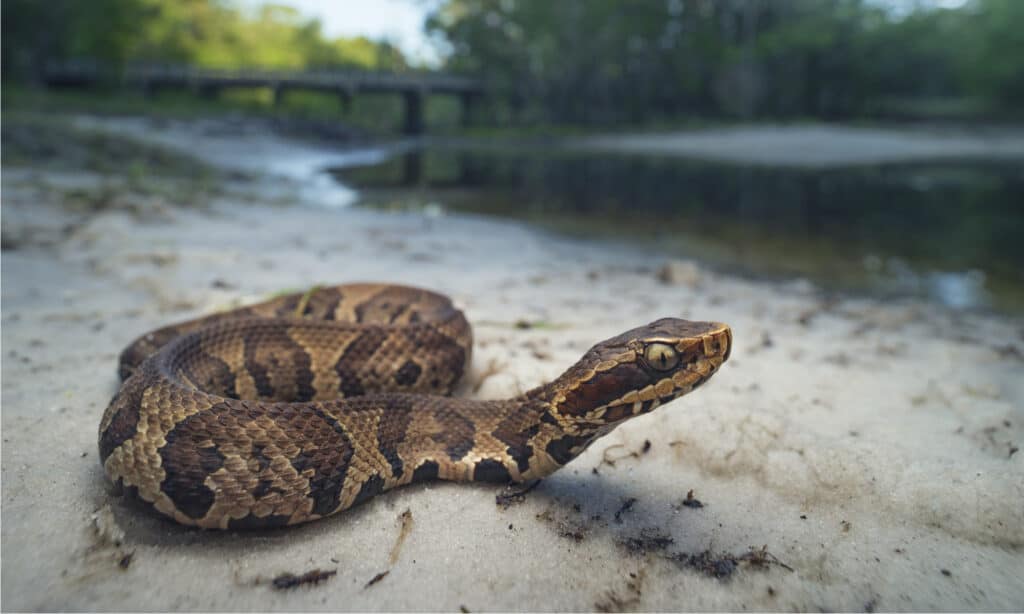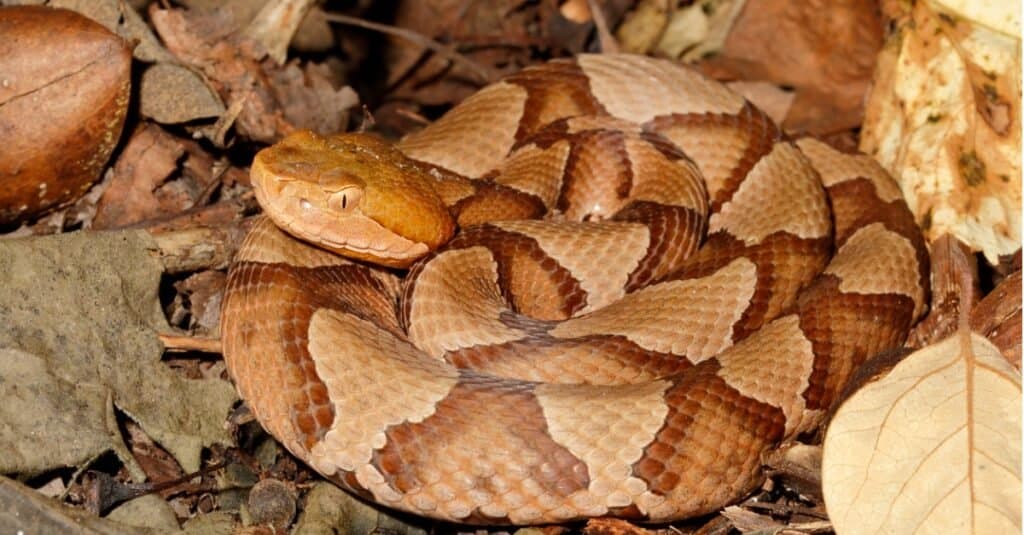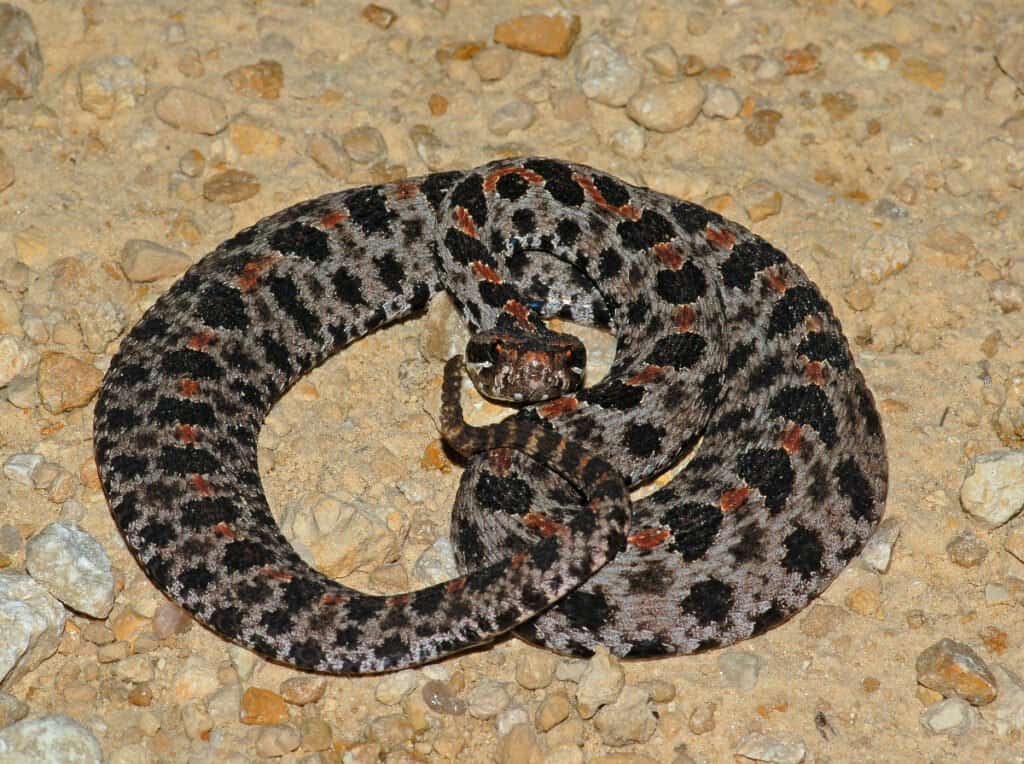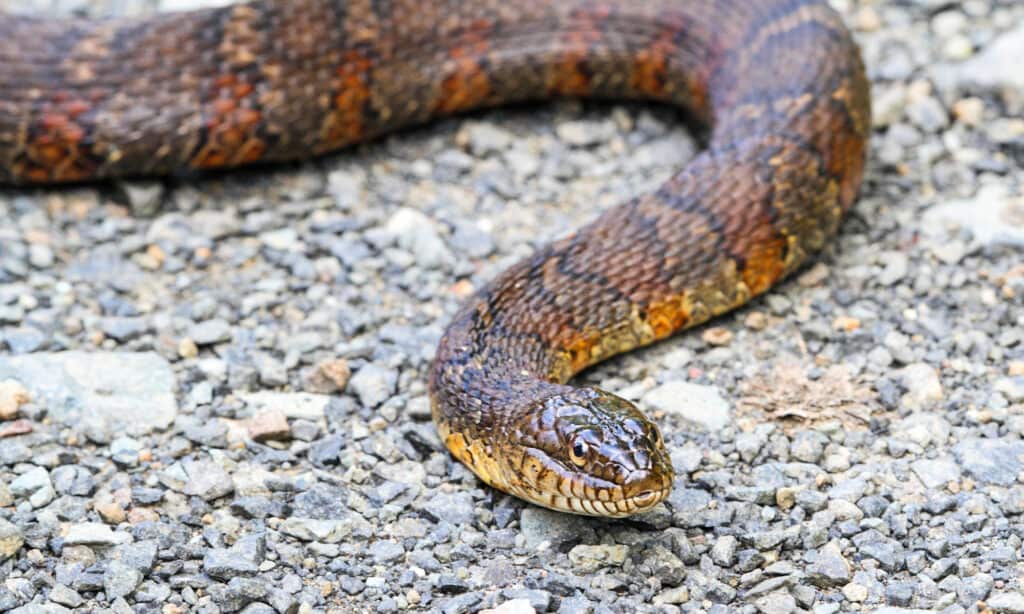Also known as the birthplace of the nation, Virginia was the first permanent site for English settlers. Virginia is famous for its food, presidential homes, and the Appalachian Trail. It is also known for being home to many snakes.
Did you know that the eastern garter snake is the state’s official snake? In Virginia, it is a criminal offense to kill this species of snake or any snake. This rule helps to preserve the lives of these valuable reptiles.
When it comes to the terminology used to describe animals including snakes, some may use the terms “poisonous” and “venomous” interchangeably. However, while both refer to using toxins as a weapon to either kill prey or as a defense against threats, there is a difference and that’s in the way these toxins are delivered. If the toxin is produced by the animal as venom and injected into its prey through a bite or wound, then the animal is venomous. If the toxin is from the animal’s surroundings or from something in its diet and it inhaled, eaten, or touched, then the animal is poisonous. Some animals may be both poisonous and venomous, such as Asian tiger snakes, which have rows of glands on their necks that release toxins from the poisonous toads that they consume.
If people commonly call snakes poisonous, it’s likely that they could mean venomous when referring to these reptiles. If a snake that produces venom bites a person and that individual is harmed or dies, the snake is venomous and if a person eats a snake and dies, the snake is poisonous.
Virginia is home to 32 species of snakes but only 3 species out of this lot are venomous. They are copperheads, rattlesnakes, and cottonmouths. In this article, we’ll be taking a look at these venomous snakes.
1. Cottonmouth

Cottonmouths are venomous and dangerous semi-aquatic snakes found in southeastern parts of Virginia.
©Kristian Bell/Shutterstock.com
Cottonmouths, also known as water moccasins, are commonly found in the southeastern parts of Virginia. They are semi-aquatic snakes. This means that they live both on land and on water. Cottonmouths have triangular heads as well as elliptical pupils. Adult cottonmouths have black tails but their tails aren’t always black. Baby cottonmouths are born with bright patterns and greenish-yellow tails which darken as they age.
Cottonmouths are known for their venom which contains hemotoxins that break down blood cells and stop blood from clotting. Once a cottonmouth bites, it will take only a few moments for the venom to spread. This will lead to hemorrhaging of the prey’s circulatory system. These species of snakes should be avoided at all times as they have been known to kill humans.
Luckily, cottonmouths do not prey on humans becase we are too big. They prey on smaller cottonmouths, such as baby alligators, small turtles, and lizards.
2. Copperhead

Copperheads are venomous snakes found throughout Virginia in places such as forests, marshes, rock outcrops, and old fields.
©iStock.com/David Kenny
Copperheads are found throughout Virginia. Their triangular heads are one of their most prominent features. They also have pits on both sides of their snots. People often mistake these for their nostrils. Copperheads aren’t large snakes and measure up to 2 to 3 feet — in some cases, 4 feet. These snakes have brown copper-like skin and cat-eyes that are called elliptical pupils.
One major reason to avoid these snakes is that they have been known to bite without a warning if they feel threatened. Their bites are venomous and contain hemotoxins that temporarily damage tissues in the bite area. In their prey, this venom is enough to weaken and kill, but in humans, they aren’t usually fatal. If you’re bitten by a copperhead snake, be sure to get treatment as soon as you can.
Copperheads are often found in forests, rock outcrops, and old fields where they hunt baby cottontail rabbits, mice, lizards, and frogs. They also hunt other snakes and baby turtles.
3. Timber Rattlesnake

Timber rattlesnakes are mostly found in the mountainous region on the western sides of Virginia.
©Joe McDonald/Shutterstock.com
Timber rattlesnakes are mostly found in the mountainous region on the western side of Virginia. There is a population in southeastern Virginia where they are also called canebrake rattlesnakes. Timber rattlesnakes are easy to identify due to their yellow, tan, or gray rounded heads, and V-shaped markings that end in a black tail.
In their adult stages, timber rattlesnakes grow to about 36-60 inches and weigh up to 52.3 ounces. They have large black crossbands across their tan or pinkish-gray bodies. Another easy-to-spot feature is the dark lines that run from each eye to their jaws.
Timber rattlesnakes are an endangered and highly venomous species. It is illegal to even possess them in the state of Virginia. The venom in their bites contains hemotoxins that affect cells and tissue. This helps the rattlesnake digest their prey more easily.
In humans, the bites aren’t usually fatal, especially if the victim is treated properly and immediately. Usually, the bitten area turns black and swells. However, this should fall off as the skin heals. Timber rattlesnakes often feed on shrews, chipmunks, and mice. They capture their prey by stalking and ambushing them. They strike quickly and inject their venom into their victims. The venom affects their prey’s tissues and cells which makes it easier for timber rattlesnakes to eat them.
Pygmy Rattlesnake

Venomous pygmy rattlesnakes may have once been found in Virginia.
©Gerald A. DeBoer/Shutterstock.com
It’s possible that another type of rattlesnake was once found in Virginia. Pygmy rattlesnakes may have been present in the state, perhaps in the far southeast, at one point in time. Pygmy rattlesnakes are the smallest venomous snakes in the United States, with adults usually measuring anywhere from 16 to 20 inches and weighing about 5.4 ounces. Not only are pygmy rattlesnakes venomous, but they are also known for their painful bites. Their venom is fatal to their prey but not usually to humans.
However, there are no confirmed sightings of the snake and the Virginia Department of Wildlife Resources does not list the pygmy rattlesnake as one of the three venomous snake species in the state.
Other Brown Snakes Found in Virginia
The venomous snakes in Virginia are all brown-colored snakes, which helps them blend in easily with their surroundings and gives them the opportunity to get close to their prey and evade predators.
Other brown snakes that make their homes in the state are the nonvenomous eastern worm snake, which is located across Virginia except for some counties in the far southwest region, and Dekay’s brown snake, widespread and more abundant in the east.
The northern pine snake has black markings over a light brown body and lives in sandy regions and dry forests in the counties of Craig, Augusta, Botetourt, and Bath. It is not venomous but it does imitate venomous species like the rattlesnake by vibrating its tail and flattening its neck and hissing when disturbed or threatened. Northern mole kingsnakes, which are usually light brown with dark or reddish-brown blotches, also act in the same defensive way.
The northern water snake is present statewide in nearly every freshwater wetland habitat. It is not a venomous species but can become very aggressive if startled. Another water snake species in the state is the brown water snake, which only occurs in the southeastern region. Find out more about brown snakes in Virginia here.

The northern water snake can be found in statewide in nearly every freshwater wetland habitat in Virginia.
©Steve Byland/Shutterstock.com
The photo featured at the top of this post is © iStock.com/NajaShots
Discover the "Monster" Snake 5X Bigger than an Anaconda
Every day A-Z Animals sends out some of the most incredible facts in the world from our free newsletter. Want to discover the 10 most beautiful snakes in the world, a "snake island" where you're never more than 3 feet from danger, or a "monster" snake 5X larger than an anaconda? Then sign up right now and you'll start receiving our daily newsletter absolutely free.
Thank you for reading! Have some feedback for us? Contact the AZ Animals editorial team.







